- Home
- J. -H. Rosny aîné
Pan's Flute
Pan's Flute Read online
Pan’s Flute
and Other Stories
by
J.-H. Rosny aîné
Translated, annotated and introduced by
Brian Stableford
A Black Coat Press Book
TABLE OF CONTENTS
Introduction 4
PAN’S FLUTE 12
ETRUSCAN AMOUR 21
PART ONE 23
PART TWO 82
SETNE’S WOMEN 123
PART ONE 123
PART TWO 183
PART THREE 222
FRENCH SCIENCE FICTION & FANTASY COLLECTION 258
Introduction
La Flûte de Pan, here translated as “Pan’s Flute,” was first published by Borel in 1897; Amour Étrusque (“Etruscan Amour”) was issued by the same publisher in 1898, and Les Femmes de Setnê (“Setne’s Women”) was first published by Ollendorff in 1903; all three initially appeared under the pseudonym Enacryos, although all three were subsequently reissued under the author’s more familiar pseudonym, J.-H. Rosny aîné. His baptismal name was Joseph-Henri Boëx (1856-1940), and his appellations are further confused by the fact that he shared the pseudonym J.-H. Rosny for some years with his younger brother Justin (1859-1948), and when they abandoned the pretence that they wrote in collaboration they distinguished themselves as J.-H. Rosny ainé and J.-H. Rosny jeune.
Joseph was by far the more prolific and more enterprising of the two brothers, and he developed a considerable reputation writing in several fiction genres. Having been taken under the wing of Edmond de Goncourt when he first arrived in Paris in the early 1880s with the intention of building a career as a writer, he was initially allocated to the Naturalist camp of which Goncourt had long been a pillar, but his work was very various, and he is nowadays best known as a significant pioneer of what Maurice Renard called “scientific marvel fiction,” a kind of imaginative fiction that had affinities with British scientific romance and the fiction that eventually acquired the label “science fiction” in the U.S.A. Almost all of his work in that vein is translated in a seven-volume set issued by Black Coat Press in 2010, consisting of Navigators of Space and Other Alien Encounters, The World of the Variants and Other Strange Lands, The Mysterious Force and Other Anomalous Phenomena, Vamireh and Other Prehistoric Fantasies, The Givreuse Enigma and Other Stories, The Young Vampire and Other Cautionary Tales and Helgvor of the Blue River and The Giant Feline. (A detailed overview of Rosny’s career can be found in the introduction to the first of those volumes.)
As the use of a different pseudonym implies, the three Enacryos stories are, in a sense, further removed from the supposed canon of Naturalistic fiction than Rosny’s scientific romances, but the nature of that apparent removal has more to do with their context than their content. In the 1890s, Naturalism, which had became a significant literary movement in France in the 1870s, was widely seen to be in a contest for prestige with the more recent Symbolist Movement, based on the literary theories of Stéphane Mallarmé. The contest was largely illusory, and very few of the writers categorized by commentators as belonging to one or other movement wanted to be pigeon-holed, let alone strait-jacketed, by any such classification. Even so, it presumably seemed convenient and politic to Joseph Boëx at that time to issue his nakedly Symbolist fiction under a distinct pseudonym, and that is why the three works in the present volume were initially signed “Enacryos.”
La Flûte de Pan bears a strong resemblance in its content and narrative strategy to a series of mythological fantasies written by the Symbolist writer Pierre Louÿs (1870-1925) commenced with “Leda, ou la louange des bienheureuses ténèbres,” (tr. as “Leda; or, The Praise of Blissful Darkness”) which first appeared as a booklet from Libraire de l’Art Indépendant in 1893 and was subsequently reprinted with similar items in Le Crépuscule des nymphes (1925; tr. as The Twilight of the Nymphs). If there were any doubt regarding Louÿs’ influence, it was dispelled when Rosny followed up the short story with the short novel Amour Étrusque. Louÿs had followed up his short story with Aphrodite, moeurs antiques (1896; tr. as Aphrodite), a fervent study of erotic obsession, which is one of the great Symbolist novels, and became the best-selling novel of its era. Amour Étrusque, a similarly fervent study of erotic obsession and ancient mores, was by no means as successful commercially, but it is nevertheless a very striking exercise in extended Symbolist fiction, and deserves more credit in that regard than it obtained at the time or has accumulated since.
Les Femmes de Setné marked a change of direction in the brief career of Enacryos, although it is certainly a further story of ancient mores as they could be perceived at the end of the nineteenth century, with the aid of contemporary archeological and anthropological endeavors and a forceful imagination. It retains a strong Symbolist element, but it adds a far more robust plot, similar in many ways to J.-H. Rosny’s endeavors in imaginative fiction—and, in fact, “Setne’s Women” would not have been entirely out of place in the earlier set of translations of Rosny’s scientific romances. Its most striking feature, however, is its further development of the most distinctive aspect of Amour Étrusque, which is the protagonist’s erotic obsession and, more particularly, one idiosyncratic feature thereof.
It is virtually taken for granted throughout the extraordinarily prolific literature depicting the psychological operations of amour that erotic obsession is essentially singular. There is a widespread acceptance of the fact that erotic obsessions tend to be temporary and replaceable, so that the most common development of amorous careers tends to involve a series of relationships rather than the unique lifelong passion that is often held to be ideal, but the conventional phrase representing that pattern—“serial monogamy”—still asserts emphatically that obsession is typically, and perhaps necessarily, exclusive. Rosny’s two novels are, therefore, highly unusually in setting out to describe and explore the psychological predicament of simultaneous erotic obsession.
It is by no means unusual, of course, for literary representations of amour to feature erotic conflicts of interest; indeed, they are typically summarized by the phrase “the eternal triangle.” Almost invariably, however, such situations are represented as matters of agonizing choice and melodramas of jealousy. Such triangles are acute because the fundamental assumption is that they essentially unstable and cannot—or, at least, ought not to—endure. They are very frequently seen as aspects of the transitions of serial monogamy, in which one relationship is dying and another burgeoning, inevitably moving toward a resolution that can leave only one intact, if any. The relationships depicted in Rosny’s novels are not like that. Dionys in Amour Étrusque and Setné in Les Femmes de Setné are both simultaneously obsessed with two women, Dehva and Flavia in the first instance, and Gaïla and Aoura in the latter, and although both heroes suffer a certain agony by virtue of being unable to make a choice between them, there is never any possibility of their making such a choice. They not only want both, but feel that they literally cannot do without both, even if it seems impossible that they could ever have both in the long term, by virtue of the pressure of social expectations and the fury of female jealousy.
It is worth noting that Symbolist fiction is, in general, not replete with conventional “happy endings.” The vast majority of Symbolist fictions are contes cruels, although they range in length and tone from epic tragedies to curt black comedies. Unlike generic love stories, which tend to be drawn irresistibly toward a climactic monogamous commitment, pretentious accounts of great amours—Naturalist, Symbolist or whatever—are far more likely to end in disaster and death than happy marriage. That is particularly true of love stories in which social circumstances are adverse; although princes routinely marry shepherdesses in artificial fairy tales, serious fiction tends to take a much dimmer view o
f the likelihood of such outcomes. The angles of eternal triangles become even sharper as their sides acquire additional social distance, and those in which Dionys and Setné are involved each have a particularly awkward social geometry, enhancing their excursions into literary terra incognita. Given that, the bizarre aspects of Setné’s incidental journey to military glory are perhaps not as out of place, symbolically speaking, as they might seem.
Le Flûte de Pan is a straightforward exercise in erotic symbolism whose elements are inherited. Like Pierre Louÿs, Enacryos embeds the myth-based story within a frame narrative, in which the teller employs it deliberately as an erotic stimulant—emphasizing its symbolism in the process—and provides the story-teller with a lyre, in order that he can illustrate the essential eroticism of music. Dionys, in Amour Étrusque, inherits Pan’s reed flute and employs it in the same way, as a powerful erotic magnet, which helps to captivate both of the women whose beauty captivates him. Setné, however has no artificial aid of that sort, and has to rely on a different kind of magic to enhance his personal charisma. Although the period of history in which he is operating is more remote than that in which Dionys is supposedly living, it is actually further removed from the “fabulous times” of Pan’s Syrinx in terms of cultural distance. Its magic is essentially fake, in spite of being lent considerable force by credulity, and the same is true of its emblems of Fate—which helps to explain the very different outcomes of the two novels, and the estimation of their intended and actual psychological effects.
Amour Étrusque is not unique within the canon of the author’s work; it has affinities with this prehistoric fantasies, and exhibits the same fascination with the employment of the literary imagination to build coherent images of human life based on scanty archeological evidence and speculative anthropological theory. As its title implies, it really is an attempt to construct a representation of a specifically Etruscan amour, albeit viewed from the perspective of a partial outsider, whose Syracusan mores originate from a distinct and markedly different part of Magna Graecia. In that regard, it is an endeavor parallel to J.-H. Rosny’s attempt to depict Lacustrian society—including Lacustrian amour—in Eyrimah (1893), and to Enacryos’ subsequent attempt to model ancient Egyptian society in Les Femmes de Setné. Nor is its focus on unorthodox erotic obsession out of keeping with a thread that ran through all of Rosny’s works, extending in his scientific romances even to love affairs between humans and aliens, and members of Homo sapiens and those of purely hypothetical species.
In the latter regard, the essential triangle of Les Femmes de Setné, like that of Amour Étrusque, is relatively moderate; although Gaïla belongs to a different race—she is described, somewhat enigmatically, as a “Bedouine”—she is not so very different culturally from the Egyptian Setné. The later novel does, however introduce the exotic character of the Queen of the Waters, a member of a distinct human species with whom one suspects that Setné, had his quota of duplicate erotic obsessions not been already complete, might have been willing and able to extend the brief sexual relationship that he forms for political reasons.
The Queen of the Waters and her people, as well as their geographical proximity to exotic monsters seemingly left over from the fabulous times of paleontological science represent another enduring preoccupation of Rosny’s, with which he apparently had considerable difficulty. Prior to writing Les Femmes de Setné he seems to have started and aborted two novels in which enclaves of such exotic survivals were to be explored. The early chapters of one were disguised as a novelette in “Nymphée (1893; tr. as “Nymphaeum), while “La Contrée prodigieuse des cavernes” (1896; tr. as “The Wonderful Cave Country”) and “Les Profondeurs de Kyamo” (1896; tr. a “The Depths of Kyamo”) appear to be two fragments of another. Les Femmes de Setné was the first complete narrative into which the author managed to include such an interlude, although its presence might well seem to some readers to be grotesquely anomalous. He went on to do it twice more, in the African adventure story L’Étonnante aventure de Hareton Ironcastle (1922; tr. as “Hareton Ironcastle’s Amazing Adventure”) and the Indonesia-set La Sauvage aventure (1935; tr. as “Adventure in the Wild”), both apparently modeled on American pulp fiction, and both sternly conventional in their representation of mild erotic obsession. Whether than makes the endeavors in question any more coherent is a matter of opinion, but it certainly does not make them more interesting.
The three Enacryos stories thus show a marked evolution as well as a fundamental commonality. They are all hybrid works, even the brief La Flûte de Pan, but the nature and extent of their hybridization changes progressively. Seen as speculative explorations of the nature and possibilities of erotic obsession, they could not, of course, be expected to reach any kind of conclusion, even though the individual narratives are obliged to do so, but that essential inconclusiveness does not detract from their audacity, and the two longer stories certainly look at the question from an unusual angle.
The Symbolists and their fellow travelers brought to a spectacular climax to Romantic literary mythology of the femme fatale, and, in particular, to the particular version of the eternal triangle in which a hapless hero is torn between a dangerous but irresistible femme fatale and modest but dependable lover. Rosny’s triangles break that pattern decisively, not simply because Flavia and Gaïa are uncommonly accommodating exotic love objects, while Dehva and Aoura are far from being modest, but because of the heroes’ absolute insistence on not making a decision between the two attractions, no matter how agonizing the conflict of their forces threatens to become.
Audacity and variation have rarely been successful selling points in the marketing of love stories, where formula is paramount, but they have a corollary fascination for connoisseurs and anyone not stuck, so to speak, in a rut. Amour Étrusque and Les Femmes de Setné certainly have no lack of that kind of fascination, and are uniquely precious because of it. They are fantastic and they are lurid, but in the context or erotic fantasies, those are recommendations, not defects, for any reader possessed of imagination. The three stories included in the present volume thus make up one of the most remarkable of literary triptychs, and one of the most intriguing.
All three translations were made from the versions of the texts reprinted in Fables Antiques et autres récits érotiques by J.-H. Rosny aîné, published in 2015 by Bibliogs, compiled and edited by Fabrice Mundzik, whose contributions to contemporary literary archeology are invaluable.
Brian Stableford
PAN’S FLUTE
Dusk was already falling. The beautiful sycamores extended enormous shadows over the river and the tall reeds. The yellow sun was seen setting and the moon rising, as pale as a silver cloud.
Lycaon savored the charming moment when the daughter and son of Latone occupied the edge of the horizon simultaneously. Covered in the dust of the roads, he was carrying a lyre of blackened wood, for he was an aede, having received the education of singers and philosophers under elegant porticoes, and the caresses of painted slaves on ivory beds, in the odor of aromatic plants, amid the harmony of musical instruments. He also remembered, both pleasantly and bitterly, industrious courtesans who knew the art of converting human sighs into gold.
And he was traveling through Hellas of the hundred cities in order to find his chimera. He sang as he went, on the agoras of cities and the edges of villages, and the kindly soil of Achaea gave him hospitality, clothing and amour in exchange. He knew how to relate the legends that please young women and how to draw the instruction therefrom that invites sensuality.
He had arrived at the Ladon of the grassy banks. In the divine half-light, he dreamed about the son of Laertes, the destroyer of ramparts, and Nausicaa with the white arms. How pleasant it would be to see her appear amid the willows of the river, with her semi-naked followers, laughing through their wet hair!
As he was thinking that, exhausted by fatigue, with his heart full of the charm of Eros, he heard silvery laughter that was prolonged amid the song
of naiads. He stopped, and looked.
The red sun was about to disappear; the large moon resembled an immense mirror in which a hill was reflected. And among the slender trees, over the reeds and the lotus, he saw nymphs or mortals, scarcely clad in pure wool, who were letting their hair dry. In the crimson and white light they were as brilliant as the daughter of Antinous and her companions.
And one of them, who seemed coiffed in radiance and woven of lilies, made him think that peoples might not have been unready to suffer for her, as for Helen.
Meanwhile, he moved forward. The sparkling young women, finally perceiving him, got to their feet in order to flee across the meadows; but he raised his hands and shouted in a soft voice exercised by music and eloquence:
“Oh! Goddesses or mortals, luminous daughters of the earth, or naiads issued from the waters, have no fear of the solitary traveler. He cannot do you any harm. Rather listen to his voice…for I know stories of the men of old and the songs of good aedes. Would you not like me to relate for you the misfortune of Syrinx, daughter of this river of the transparent gulfs: Syrinx, who could only flee the hairy god with the goat’s legs by becoming a slender reed? That story is charming on summer nights, and full of secret lessons.”
The young woman who seemed to be coiffed by radiance stopped, and then the others. They all approached the aede with the gestures of curious hinds with large starlit eyes, and one of them shouted: “Tell us the story of the nymph Syrinx, stranger. We will listen to it mingle with the voice of the river. But first take a cup of dark wine, gentle on the heart.”
She picked up a goatskin full of wine and poured a cupful for Lycaon. He raised the cup toward the sky, made a small libation to the river, and savored the beverage, the winged soul of which filled him with eloquence.

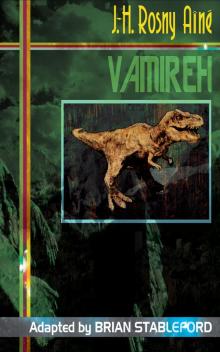 Vamireh
Vamireh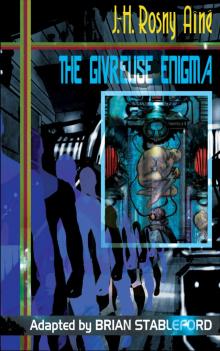 The Givreuse Enigma
The Givreuse Enigma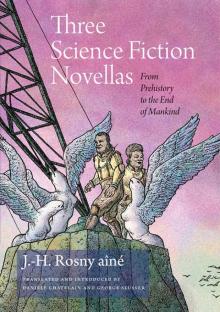 Three Science Fiction Novellas: From Prehistory to the End of Mankind
Three Science Fiction Novellas: From Prehistory to the End of Mankind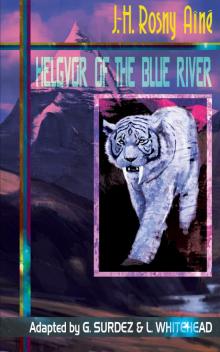 Helgvor of the Blue River
Helgvor of the Blue River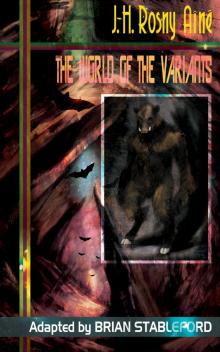 The World of the Variants
The World of the Variants Pan's Flute
Pan's Flute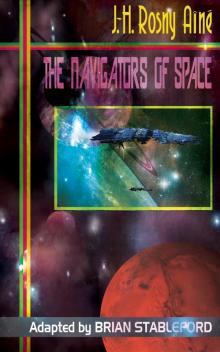 The Navigators of Space
The Navigators of Space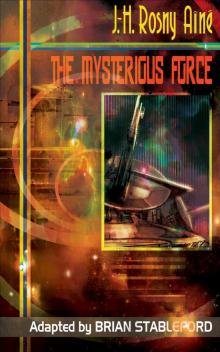 The Mysterious Force
The Mysterious Force